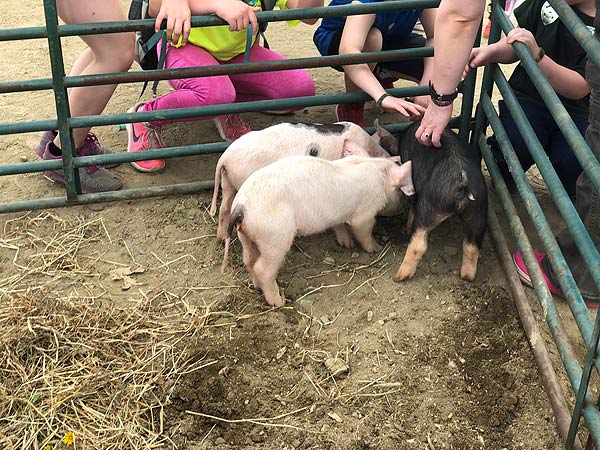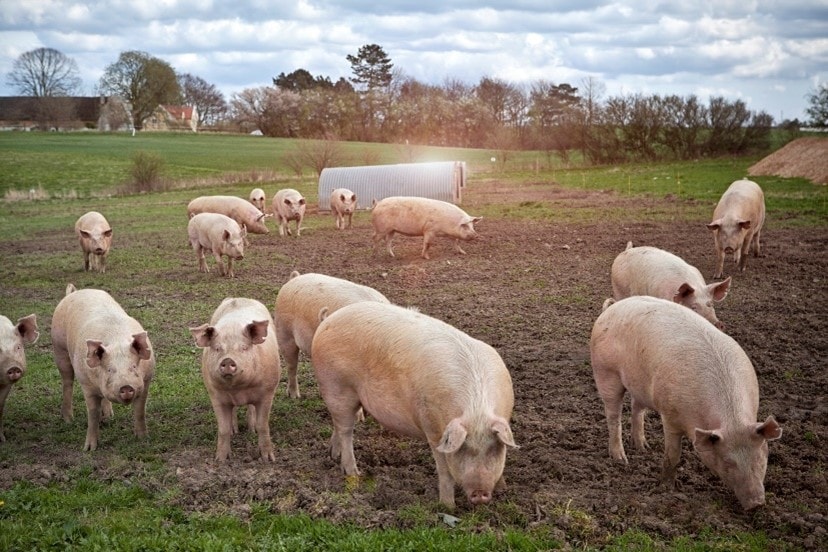Influenza and Zoonoses Education among Youth in Agriculture program

In 2011, after multiple outbreaks of influenza (flu) in people caused by viruses that normally spread in pigs, CDC created the Influenza and Zoonoses Education Among Youth in Agriculture program in collaboration with the Council of State and Territorial Epidemiologists (CSTE) and the U.S. Department of Agriculture (USDA). Since then, CDC has worked with CSTE and USDA to promote One Health collaborations between federal and state public health and animal health authorities and state youth agriculture groups.
The program educates youth about flu and other zoonotic diseases shared between animals and people. It also delivers disease prevention messages and strengthens One Health networks at the state level and within agricultural communities across America.
Program Goals and Objectives:
- Improve participant awareness and knowledge of variant and avian (bird) flu virus infections and other zoonotic diseases, including how diseases spread and how to prevent them.
- Motivate participants to adopt behaviors that can help prevent the spread of zoonotic disease.
- Help participants better understand the roles public and animal health play in disease prevention and how they work together to achieve the best health for both people and animals.
- Develop relationships among stakeholders to facilitate more effective and efficient responses to important public and animal health issues (for example, outbreak response).
- Foster inter-state collaboration around youth zoonotic disease education and outbreak response efforts, with the goal of creating a sustainable regional and national partnership network to implement this work.
- Increase participant awareness and knowledge of careers in public and animal health.
Timeline of Youth Agriculture Education Program

2011-2012
In response to multiple outbreaks of human illness caused by influenza viruses that normally spread in pigs, CDC’s Influenza Division identified opportunities to work with youth agriculture organizations to raise awareness and reduce the risk of future outbreaks. The Division brought together colleagues from CDC and USDA to discuss the creation of a federal/state network of human and animal health authorities to partner with 4-H and other organizations on zoonotic disease education and prevention.
2012
CDC and USDA piloted the Public Health Youth in Agriculture Education Project in partnership with Georgia 4-H. In less than two years, a curriculum was jointly developed and distributed by Georgia 4-H; the curriculum reached 90,000 youth in the state during the first year.
2014
CDC and USDA partnered with CSTE to provide technical assistance and funding to six health departments to launch state-run collaborations around zoonotic disease with 4-H and FFA.

2016
CDC and CSTE awarded additional funding to five health departments to build on their previous success and expand the project’s reach. This same year, some county fairs in Michigan experienced outbreaks of influenza A (H3N2) variant virus (also known as “H3N2v”). The existing partnership facilitated collaboration with youth agriculture clubs during the response.
2017- present
CDC and CSTE awarded annual funding to at least 6 health departments and academic institutions each year to further expand the project’s reach. The program has developed stronger One Health collaborations and relationships among human and animal health stakeholders. Partners have produced dozens of resources, courses, activities, and materials to promote youth education.
Available resources:
CDC and CSTE created a resource library that includes in-person courses, online learning modules, activities, posters, and other print materials for fair settings, animal exhibits, and more. Visit Youthagriculture.org to find these resources.

- How to Stay Healthy at Animal ExhibitsPreventing the Spread of Influenza A Viruses
- One Health
- Animals in Public Settings Toolkit (National Association of State Public Health Veterinarians)
- Influenza and Zoonoses Education Among Youth In Agriculture Fact Sheet
- Print Materials: Farm Animals
- CDC’s One Health Office: What We Do
- Influenza and Zoonoses Education among Youth in Agriculture
- USDA’s National Institute of Food and Agriculture (NIFA)
- USDA’s Animal and Plant Health Inspection Service (APHIS)
- Council of State and Territorial Epidemiologists (CSTE)
- National Center for Immunization and Respiratory Diseases (NCIRD)
- National Center for Emerging and Zoonotic Infectious Diseases (NCEZID)
- CDC’s One Health Office